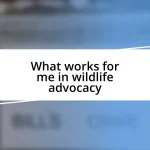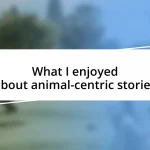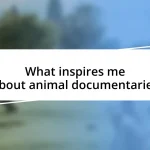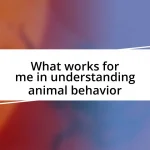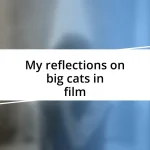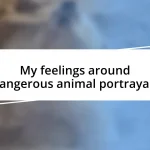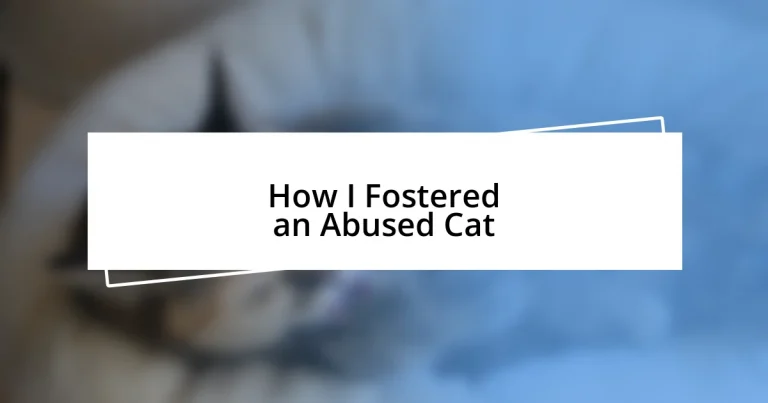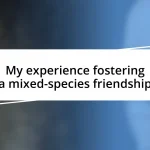Key takeaways:
- Recognizing signs of abuse in cats, such as flinching and aggression, is essential for their recovery and understanding their trauma.
- Establishing a consistent routine, including feeding times and gentle interactions, helps create a secure environment that fosters trust and comfort.
- Seeking professional help, like advice from veterinarians and behaviorists, can provide valuable tools and emotional support for fostering abused cats.
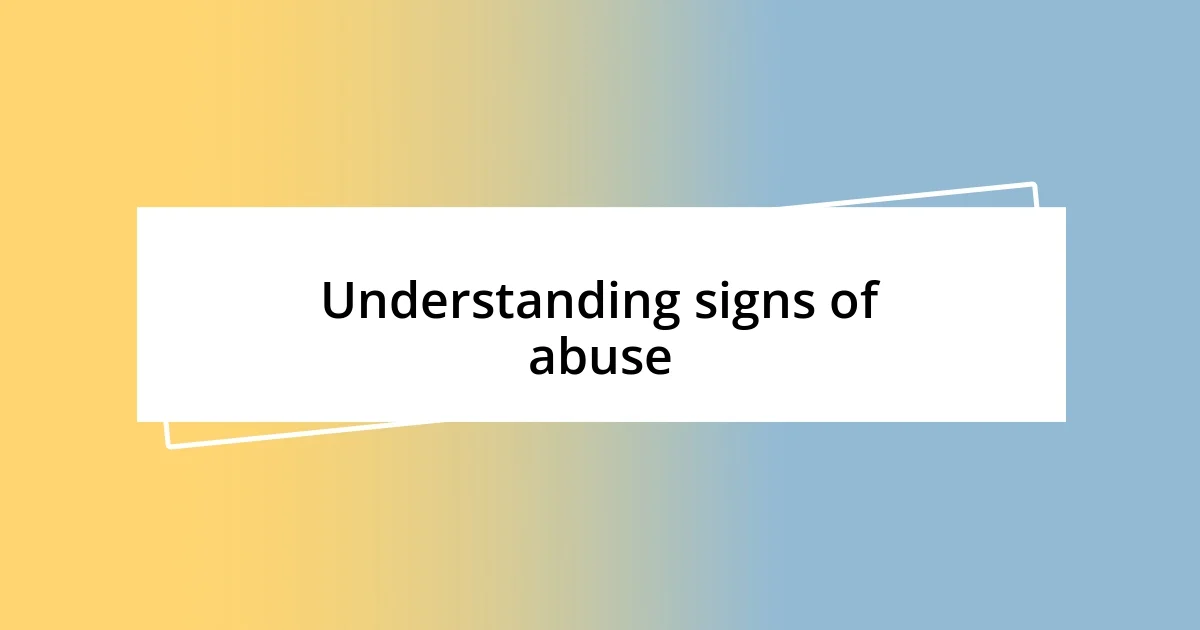
Understanding signs of abuse
Recognizing the signs of abuse in a cat can be heartbreaking, yet it’s essential for their recovery. When I first took in Ginger, she would flinch at the slightest movement, which was a clear indicator of her past trauma. Have you ever seen a cat cower in fear? It’s a gut-wrenching sight that often speaks louder than words.
Another significant sign I observed was her sudden aggression when approached too quickly. I remember trying to pet her gently, only to be met with hissing and swatting. That initial behavior made me realize how important it was to give her space and understand her triggers. It’s fascinating how a cat can teach you about patience and trust, isn’t it?
Moreover, physical indicators such as unkempt fur or untreated injuries are also red flags. When I first groomed Ginger, I found patches where she had pulled out her own hair—stress-induced behavior. Seeing these marks on her skin reminded me of the emotional scars she carried and reinforced my commitment to providing her with a safe, loving environment. What transformations might your own cat be waiting to experience?

Introducing a routine for comfort
Creating a routine for Ginger was one of the most important steps in helping her feel secure. From the moment I established a daily schedule, I noticed her demeanor begin to shift. Cats thrive on predictability, and I made it a priority to feed her at the same time each day. Slowly, I could see her relax, as if acknowledging that she was safe.
To further enhance Ginger’s comfort, I introduced small but meaningful routines:
– Feeding at consistent times: This helped her understand when to expect meals, easing her anxiety.
– Gentle play sessions: I incorporated short, gentle playtimes, allowing her to engage on her terms.
– Quiet moments for snuggles: I dedicated time for calm interactions, such as quietly sitting with her so she could approach when ready.
– Regular grooming: This not only helped her appearance but also reinforced trust.
Creating these small rituals allowed her to find solace in predictability. It was heartwarming to watch her gradually embrace this new life, each little routine affirming that she belonged. Have you ever witnessed how something so simple can build a bond?

Seeking professional help when needed
When fostering an abused cat, it’s crucial to recognize when professional help is needed. I remember feeling overwhelmed by Ginger’s behavior. It wasn’t just about her fear; she sometimes showed signs of distress that I felt ill-equipped to handle. Seeking advice from a veterinarian and a cat behaviorist not only provided me with the right tools, but it also assured me that I wasn’t alone in this journey.
There were moments when I questioned my ability to help her. After a particularly bad day, where Ginger hissed and hid for hours, I decided to reach out to a local animal shelter for guidance. Their team offered valuable insights on behavior modification techniques that really made a difference. It blew my mind how a few simple adjustments changed our interactions. Have you ever felt that a little help can transform your approach to a tough situation?
Emotional support is just as important as physical care. Connecting with a feline behavior specialist helped me understand that some things, like trust-building, took time and patience. During our sessions, I learned to appreciate every small victory, like when Ginger finally purred while curled next to me. It’s incredible how collaboration with professionals can open doors to deeper understanding and companionship.
